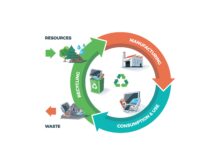In light of the growing concerns about the environment, more and more individuals are actively seeking ways to reduce their environmental footprint. One of the most effective ways to achieve this goal is by embracing the concept of zero waste living, a lifestyle that seeks to eliminate waste as much as possible. In this article, we will delve into the complexities of zero waste living, explore the various benefits of this lifestyle, and provide you with a plethora of tips on how to significantly reduce your environmental footprint.
The Intricacies of Zero Waste Living
Zero waste living is a multifaceted lifestyle that involves a meticulous and deliberate approach to waste reduction. It revolves around the five Rs of zero waste living: Refuse, Reduce, Reuse, Recycle, and Rot.
Refuse
The first step in achieving zero waste living is to refuse anything that is unnecessary. This encompasses all disposable items, such as plastic bags, straws, and water bottles. By refusing these items, you can significantly reduce your environmental impact and save valuable resources.
Reduce
The second step involves reducing the amount of waste that you produce. This can be achieved by buying only what you need, avoiding over-packaged products, and choosing products with minimal packaging.
Reuse
The third step entails reusing items as much as possible. This includes using cloth bags instead of plastic bags, using refillable water bottles, and purchasing second-hand items.
Recycle
The fourth step emphasizes recycling as much as possible. This means separating materials such as glass, plastic, and paper and putting them in the appropriate recycling bin.
Rot
The final step involves composting organic waste, such as food scraps and yard waste. Composting is an effective way to reduce the amount of waste that goes to landfills while also providing valuable nutrients for your garden.
The Benefits of Zero Waste Living
Zero waste living offers numerous benefits for both individuals and the environment.
Environmental Benefits:
- Reduces the amount of waste going to landfills, incinerators, and the environment.
- Saves resources, such as water, energy, and raw materials.
- Reduces greenhouse gas emissions and helps to mitigate climate change.
- Reduces pollution, such as air and water pollution, that can harm human health and the environment.
Individual Benefits:
- Saves money by buying only what you need and reducing the need to buy new products.
- Improves health by reducing exposure to harmful chemicals and pollution.
- Builds a sense of community through sharing and bartering items.
- Encourages creativity and resourcefulness in finding new uses for items.
Strategies for Zero Waste Living
To successfully embrace the lifestyle of zero waste living, here are ten practical strategies to adopt:
-
Bring Your Own Reusable Items
To reduce the use of disposable items, such as plastic bags, straws, and utensils, bring your own reusable shopping bags, water bottles, coffee cups, and cutlery.
-
Buy in Bulk
Buying in bulk significantly reduces the amount of packaging waste that you generate. Choose bulk options for food items, cleaning supplies, and personal care products.
-
Choose Products with Minimal Packaging
When shopping for products, choose items with minimal packaging. Opt for products with biodegradable or recyclable packaging, or products that are sold in bulk.
-
Use Cloth Products
Use cloth products instead of disposable items. This includes cloth napkins, towels, and diapers. These items can be washed and reused, significantly reducing the amount of waste that you generate.
-
Compost Food Waste
Composting food waste is a great way to reduce the amount of waste that goes to landfills. Composting provides valuable nutrients for your garden and can also help to reduce greenhouse gas emissions.
-
Donate or Sell Items
Donate or sell items that you no longer need. This can include clothing, furniture, and electronics. By doing so, not only do you reduce waste, but you also help to support local charities and organizations.
-
Avoid Single-Use Plastics
Avoid using single-use plastics such as plastic bags, straws, and water bottles. These items are not biodegradable and can take hundreds of years to break down in the environment.
-
Choose Sustainable Products
Choose products made from sustainable materials such as bamboo, organic cotton, and recycled plastic. These products are better for the environment and are often of higher quality.
-
Repair and Reuse Items
Repair items instead of throwing them away. This can include clothing, electronics, and household items. By repairing and reusing items, you can extend their lifespan and significantly reduce waste.
-
Support Local and Sustainable Businesses
Support local and sustainable businesses that prioritize environmental responsibility. These businesses often use eco-friendly materials, reduce waste in their operations, and support their local communities.
The Final Word
In conclusion, zero waste living is a progressive lifestyle that not only benefits the environment but also offers numerous benefits for individuals. By implementing the five Rs of zero waste living and adopting the strategies outlined in this article, you can significantly reduce your environmental footprint while also saving money, improving your health, and encouraging resourcefulness. So why not take the plunge and embrace a zero waste lifestyle today? Your future self and the planet will thank you for it!
Google News | Telegram
















